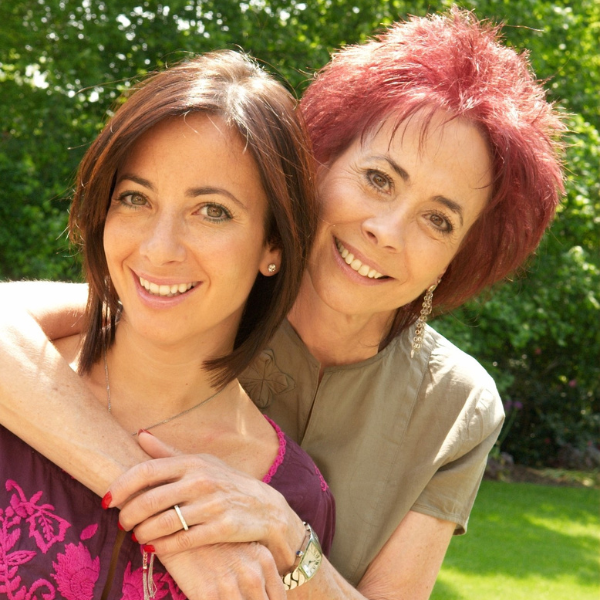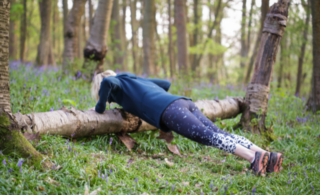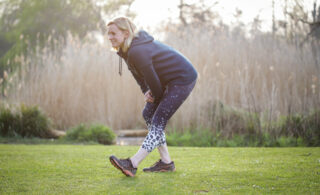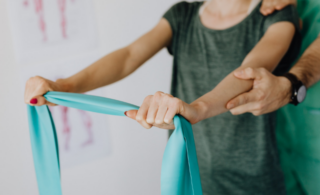
It can be difficult to know how to exercise following a breast cancer diagnosis. This article explains why exercise is important and provides some tips for exercising during cancer treatment.
By Yani Fish
Why is exercise important?
Let’s talk about why exercise is important for someone with a cancer diagnosis:
- Studies have shown that physically active cancer patients can have a 30% lower risk of cancer recurrence and improved survival compared with those who are inactive
- Improved cardiovascular fitness
- Reduces fatigue and treatment side effects
- Improved bone mineral density
- Keep ownership and control of something in your life
- Reduce ‘chemo brain’
- Feel strong and focussed
- Help reduce treatment induced weight gain
- Build / rebuild pelvic floor and core strength – reduction in lower back pain
- Feel steady and balanced on your feet
- Improve mood, reduce anxiety and depression
- Feel like more than just a cancer patient while you’re exercising – you can just be you, doing a workout!
Tips for exercising
If you’ve not done any exercise before, that doesn’t mean you can’t start post diagnosis – there’s no time like the present!
Here’s some tips for those who’ve never exercised before and those who just want to start somewhere simple:
- Simple banded mobility movements
- Using a chair and working your sit to stand without using your hands
- Using your stairs and working step ups to keep you feeling strong on one leg
- Adding more movement to your day – taking the laundry upstairs a few items at a time, or unloading the dishwasher piece by piece will add steps and full body movements into your daily routine
- Walking more, inside or outside the house
- Practicing push ups on the wall – stand facing the wall, hands just outside of your shoulders, core tight and push in and away from the wall
- Playing ball with kids / family
- Using a milk carton (with a handle) or very light weights and sitting tall, while pressing them up, over your head
- Seated sit ups – sit at the edge of your chair, feet hip width apart, pull belly button to spine and slowly lower your shoulders back until they tap the back of the chair. Using your core (not your arms) pull your torso back upright and repeat
Professional support
If you’re looking for support in exercise with a cancer diagnosis, it’s very important that you find someone with a cancer and exercise qualification. A simple PT qualification won’t be enough. This person needs to understand you, your journey, your surgery, diagnosis, meds, side effects, contraindications of your meds etc. So, the best place to start is a quick Google search, find someone local to you with a CanRehab cancer and exercise qualification. Otherwise, you can train online with a qualified individual from further afield. Another option is to search for SafeFit – it’s an NHS and MacMillan study happening right now – which I am a part of – and you’ll receive 6 months of online 121 training for free from a qualified cancer and exercise specialist.
My final thought, for anyone who has / has had cancer, is find the ways you like to / want to move and find someone you feel safe doing it with and do it. Movement is medicine and it really will help you in so many more ways than you can ever imagine. Yes, you’ll have good and bad days on your cancer journey but knowing that you’ve had opportunity to move and build or maintain strength is so important both mentally and physically.
About the author
Yani Fish is a Personal Trainer and CanRehab qualified Level 4 Cancer and Exercise Specialist. Yani works with cancer patients from diagnosis and right through post-surgery, during treatment and beyond. You can follow Yani on social media on Instagram @stronginsurrey.
Further information
Future Dreams run a variety of exercise classes and movement workshops for people with/after breast cancer. For more information and to register for a class/workshop see here.
To return to the homepage of our Information Hub, click here where you can access more helpful information, practical advice, personal stories and more.
January 2023
The information and content provided in all guest articles is intended for information and educational purposes only and is not intended to substitute for professional medical advice. It is important that all personalised care decisions should be made by your medical team. Please contact your medical team for advice on anything covered in this article and/or in relation to your personal situation. Please note that unless otherwise stated, Future Dreams has no affiliation to the guest author of this article and he/she/they have not been paid to write this article. There may be alternative options/products/information available which we encourage you to research when making decisions about treatment and support. The content of this article was created by Yani Fish and we accept no responsibility for the accuracy or otherwise of the contents of this article.
Share

Support awareness research
Donate to those touched by BREAST cancer
Sylvie and Danielle began Future Dreams with just £100 in 2008. They believed nobody should face breast cancer alone. Their legacy lives on in Future Dreams House. We couldn’t continue to fund support services for those touched by breast cancer, raise awareness of breast cancer and promote early diagnosis and advance research into secondary breast cancer without your help. Please consider partnering with us or making a donation.



